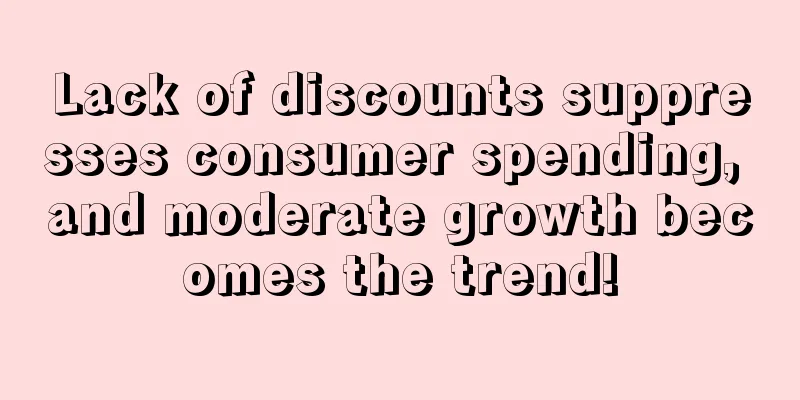Lack of discounts suppresses consumer spending, and moderate growth becomes the trend!

|
According to the latest news, due to rising inflation rates, consumers are finding it difficult to find previous promotions and discounts this holiday shopping season , resulting in a situation where "consumers save more and spend less . "
According to the U.S. Commerce Department, retail sales rose 0.3% from November but fell short of expectations, and the trend of modest growth suggests that consumer spending will be hit harder by inflation in the future , which is currently at a 39-year high . Last week, the U.S. Labor Department reported that the consumer price index rose 6.8% year-on-year in November, the fastest increase since June 1982.
According to foreign media reports, on an annual basis, retail sales in November this year increased by 18.2% year-on-year, while in October it increased by 16.3% year-on-year, as stimulus checks and wage increases supported consumer spending power. Online sales were unchanged last month, while department store sales fell 5.4%.
The report said that the "side effects" of the epidemic have reduced discounted items, while supply chain backlogs and inflation are some of the factors leading to the lack of discounts.
The report also said that retailers have faced discounting and deflation for years, and now their newfound pricing power is helping to increase profits at a time when retail sales are still recovering from the pandemic and price increases are also making shoppers think twice about where they spend this holiday season.
Data from the U.S. Bureau of Labor Statistics also showed that the producer price index in November increased 9.6% from the previous year and increased 0.8% month-on-month.
Some large brand companies in the United States are also raising prices. In addition to passing on higher prices to consumers, they are also recruiting employees amid labor shortages to ensure that the supply chain continues to be supported and shelves are stocked. The emergence of Omicron may exacerbate this situation.
Still, the National Retail Federation, the largest U.S. retail trade group, said that despite the challenges, the holiday shopping season appears on track to exceed its sales growth forecast of 8.5% to 10.5%. Holiday sales in 2020 were up 8.2% compared with the previous year .
With only one week left until Christmas, major retailers and sellers are preparing for the "final battle". Some are looking forward to it, while others say that they will be content as long as they don't lose money, and sales must continue whether they are good or bad. Discount lack |
<<: Five major development trends of DTC e-commerce in 2022
>>: Anker's new move! Investing 32 million to develop new product categories
Recommend
What is WinningDSer? WinningDSer Review, Features
WinningDSer is a professional dropshipping tool t...
Orders from multiple sites plummeted! Amazon's ranking system is messed up
Since last weekend, the order volume of many sell...
What is AskmeBazaar? AskmeBazaar Review, Features
AskmeBazaar was launched in 2012 and invested by t...
New shopping patterns in the United States after the epidemic: beauty and shoes are the hottest sellers
More than 53% of consumers buy beauty products on...
Rogue law firm GBC strikes again, summer outdoor products are sued!
With the arrival of the Independence Day holiday,...
Redbubble was shocked to find discriminatory T-shirts against Asians, Tmall set up a "trial operation period"
Online shopping platform Redbubble found T-shirts...
What is Long Yuan International? Long Yuan International Review, Features
Longyuan International (Shanghai Longyuan Internat...
What is Candy Club? Candy Club Review, Features
Candy Club was founded in 2014 and is a candy clu...
What is perfectdiary? perfectdiary Review, Features
perfectdiary is a brand under Guangzhou Yixian E-C...
What is ZEBO(Sunvalley Group)? ZEBO(Sunvalley Group) Review, Features
Sunvalley Group was founded in 2007 by Sun Caijin....
U.S. consumer confidence falls to lowest level in nearly 11 years
U.S. consumer confidence fell to its lowest level...
Publicly selling free guidebooks? American professional team hurts Chinese sellers
Recently, a post-90s Chinese man was arrested for...
Huge profit! A couple made tens of millions selling "pickle jar" sweatshirts
In this context, users often see advertisements f...
Clubhouse launches new "anchor reward" function to stabilize mentality under heavy pressure
Following the launch of the Creator First creator...
What is ChannelApe? ChannelApe Review, Features
<span data-docs-delta="[[20,{"gallery"...









